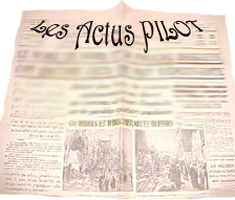G’day from the PILOT team in Alice Springs!
We are in Alice Springs to launch a balloon. The balloon carries a telescope that we will use to
observe the emission from dust in our Galaxy. We call the experiment ‘PILOT’, which stands for ‘Polarised Instrument for Long-wavelength Observation of the Tenuous interstellar medium’.
The balloon will go to the stratosphere (the top level of the atmosphere, about 40km above the
earth, which is ~4x higher than the largest commercial aeroplanes fly). The balloon is really big.
When it reaches the stratosphere, it has a diameter of 100m, which is about the size of the
Adelaide Oval.
The balloon carries a structure called a ‘gondola’, which contains the telescope and all the
equipment needed to control the telescope and send the information back to earth. The total
weight of the gondola is about 1000kg.
The PILOT team mostly includes scientists and engineers. In total, there are about 30 people
working on PILOT in Alice Springs. Some of the team are from the French Space Agency (CNES).
The rest of the team is from different laboratories in France and around the world.
Thursday 23 March 2017
Yesterday we stayed in the workshop all night to test the telescope instruments. We do these tests
to make sure the detectors are working properly. It’s important to find out if there are any problems
before we launch the balloon!
We also use the test data for calibration. This means that we compare the measurements that we
take in the workshop with the measurements that we will make during the balloon flight. By doing
this, we can work out what part of the signal is from dust in space, and what part comes from the
instrument itself.
We work all night because we need the instrument to be the same temperature as it will be during
the balloon flight. Since the cryostat can only stay cold for a short time (about two days), the team
needs to do as much work as possible while the cryostat is cold.
All the tests went very well, except that we had a pizza problem. We ordered 8 large pizzas,
because we thought that pizzas in Alice Springs would be the same size as in France. But the ‘large’ pizza size in Alice Springs is four times bigger than the ‘large’ pizza size in France. We had
much too much pizza! Our optical engineer, Yuying, takes a picture before we start eating our mega-pizzas!
Yuying’s job is to design the telescope so that light travels from the entrance window
of the telescope all the way to the detectors.
Monday 20 March 2017
Today we are filling the cryostat with liquid helium. Jean-Pierre and Bruno preparing to connect the liquid helium to the cryostat.
The cryostat is a type of refrigerator that we use to make the telescope’s detectors cold. It is a
cylinder about 1.5m tall and 1m wide. When the balloon is launched, all of the equipment inside the
cryostat will be at -272 degrees! The detectors must be cooled to this temperature so that they are
sensitive enough to detect the emission from dust in space.
It takes over a week to cool the cryostat from room temperature to -272 degrees. We cool the
cryostat in stages. Last night we did tests on the detectors at -200 degrees. In the next stage,
which starts today, we will cool the detectors to -269 degrees. The final descent to -272 degrees
will take another 4 or 5 days.
The PILOT telescope in the workshop at the Alice Springs Balloon Launch Station. The big circle that you can see in the photo is where the light from space enters
the telescope. The cryostat is located behind the window. The total weight of the
equipment that we will launch is about 1000kg.
Sauf mentions, crédits photos © IRAP/Ch. Marty, 2017

